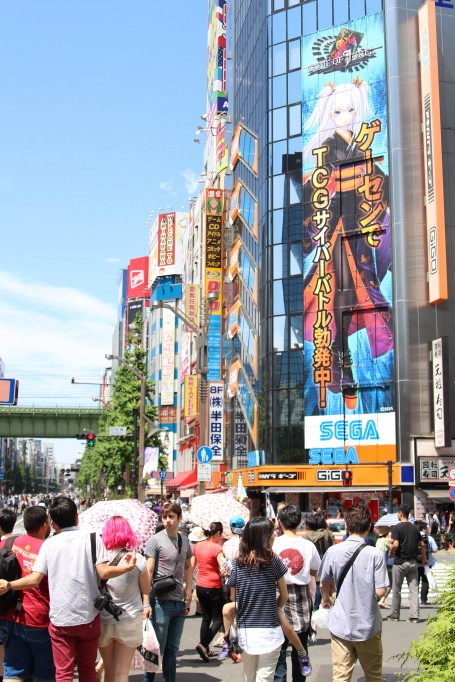By: Sophia Li
When I purchased my roundtrip ticket to Tokyo less than two months ago, I was incredibly excited and grateful for the opportunity to explore a new country, no less one that has developed such a “cool” reputation. Everything from high-tech robots to Hello Kitty has made me want to come to Japan.
And yet, as I was frantically packing at 5:30 the morning of my flight, I felt a little uneasy about engaging with Japanese culture. Both my parents grew up in China, and suffice it to say my mom does not exactly like Japan. The Rape of Nanking was not that long ago, and the fact that there are Japanese nationalists who refuse to own up to Japan’s dark history makes me rather uncomfortable. Of course, the United States has committed its own share of unspeakable crimes, and there are plenty of problems in America currently. Issues in Japan are not worse than issues in the United States simply because I am not as familiar with them, and I recognize that fact. At the same time, I think that in order to be a “critical tourist” as our guest speaker Ryoko Nishijima and Professor Kurashige have instructed us to do, it is necessary to take the good with the bad, and to not let Japan’s wonders blind me from being able to see its problems.
It is not enough to just make observations about Japan; my goal for the next two weeks is to contextualize my experiences within Japan’s political and historical landscape. With all of that being said, I have loved Japan thus far. I love that Japan is so pedestrian friendly. Los Angeles could learn a lot from Tokyo. The hardest thing I’ve had to do in my first couple days in Japan is find places to throw away my trash in public.
Luckily, I’ve been able to get by on the 10 or so Japanese phrases I know. Most Japanese workers know enough English, even if only a few words, to bridge the language gap. Something that has surprised me is I have not yet met or spoken with any Chinese people (that I know of). This is surprising to me considering our Teaching Assistant Yu “Toku” Tokunaga taught us that Chinese immigrants make up the largest foreign population in Japan. I have probably interacted with Chinese workers without recognizing that they were Chinese, but I have not noticed their influence on Japanese society. In comparison, Koreans are a smaller foreign population as far as nationality is concerned, yet their influence can be seen with the popularity of Korean culture and a large number of descendants of Korean immigrants live in Japan.
Japan has exploited Chinese labor through “trainee” programs, which claim to prepare Chinese workers for jobs but in reality just contract out minimum wage work. These programs are three-year contracts, at the end of which Chinese workers must leave Japan and return to China, often with no better skills than the ones they entered Japan with. For example, Toku once interviewed a Chinese trainee who wanted to become a tour guide but her work consisted of inspecting computer chips for several hours every day. At least from what I have observed so far, the Chinese immigrants who work low wage jobs seem to function as an invisible minority in Japan, particularly because many factory jobs are located in rural areas, out of sight from Japan’s metropolitan areas. Even though there are Chinese people who do work in visible places, like convenience stores, I have been unable to find “Chinese” elements in Japanese society other than kanji, Chinese written characters that are used in the Japanese written language.
I hope to speak more with scholars from Meiji University in the next week to get a better understanding of how Chinese workers function in Japanese society.


